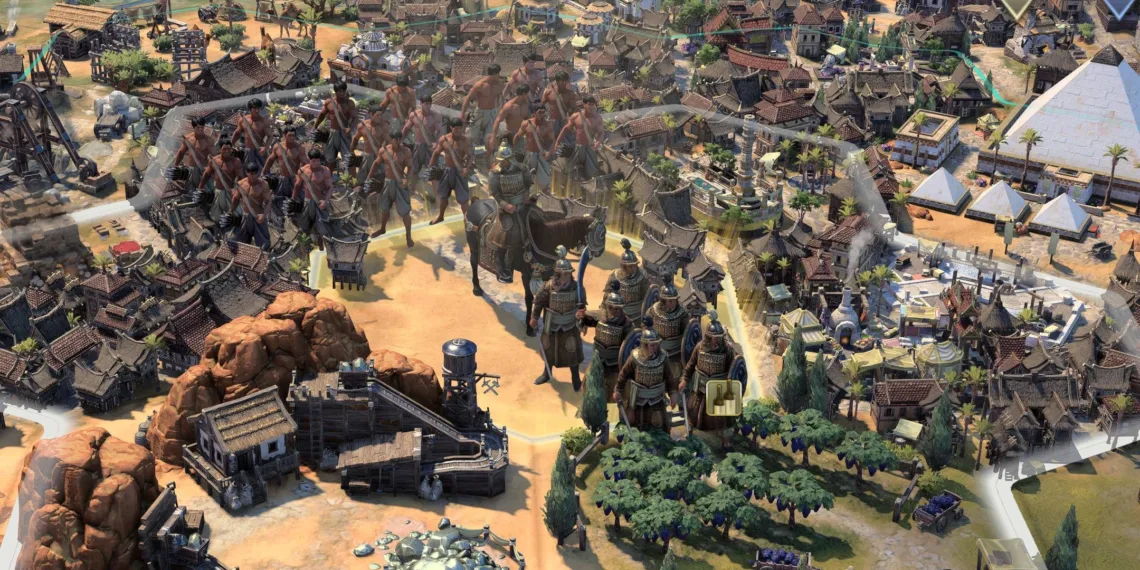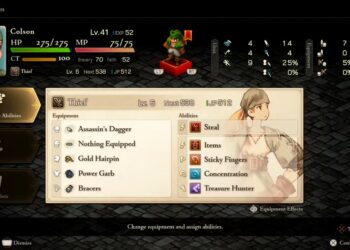Select Language:
Quick Links
Army Commanders are a new type of unit introduced in Civilization 7. They significantly alter combat dynamics compared to previous games in the series. Uniquely, Army Commanders can receive promotions, while regular units do not. They also have the distinct ability to operate across different eras, making them an essential part of your strategy.
These commanders are among the most powerful units in the game, enabling fast movement across the map, providing critical combat bonuses, and even boosting your city’s district productivity. This guide covers all aspects of Army Commanders to help you maximize your empire’s potential.
Updated on March 2, 2025: This article has been revised to provide more insights into Army Commanders in Civilization 7.
Overview of Army Commanders
Army Commanders stand out because they are the only unit that can operate across different ages. For instance, if you have multiple commanders in the Antiquity Age, they will continue to function in the Exploration Age. They maintain their experience and promotions, which is crucial for effective gameplay. Commanders gain experience through attacking enemy units, defeating independent powers, or capturing settlements within their Command Radius.
Understanding the Command Radius
The Command Radius is represented by the white tiles that surround your commander. At the default level, commanders have a one-tile radius.
Deploying and Organizing Armies
Army Commanders can combine multiple units into one tile, allowing you to manage your forces more efficiently. At their base ability, they can stack four additional units in a single tile, streamlining operations and enabling the use of movement bonuses from the Maneuver promotion tree.
Focused Fire and Coordinated Attacks
These commanders possess special abilities that can unleash a Focus Fire with ranged units or orchestrate a Coordinated Attack with infantry and cavalry units. Although commanders themselves cannot inflict damage, they come equipped with a combat stat that allows them to withstand some attacks. However, since they preserve upgrades through eras, it’s essential to protect them.
Using these abilities boosts the combat strength of units, potentially tipping the scales in battle and providing the edge needed for victory.
Reinforcement and Recovery
An invaluable function of Army Commanders is their Reinforce ability, allowing units to quickly return to the Army Commander, even from distant locations on the map. A unit just needs to be over six tiles away from the Commander with full movement potential. The time it takes for units to join the stack depends on their distance from the Commander and any Recovery Time promotions you might have.
Commanders Will Respawn
If you happen to lose an Army Commander, they will respawn after a set number of turns, based on your game speed settings. On the standard speed setting, it takes 20 turns for them to return.
Available Promotion Trees for Commanders
There are five promotion trees for commanders: Bastion, Assault, Logistics, Maneuver, and Leadership.
Bastion Tree
Focused on fortifications and defense, key promotions include:
- Bulwark: This allows units to set up defenses faster.
- Garrison: Provides extra health to fortified districts within cities.
The Bastion tree is particularly useful when you need to defend against aggressive opponents.
Assault Tree
This tree emphasizes aggressive tactics, offering boosts for units that attack from within the commander’s radius. Key promotions include:
- Initiative: Units can move right after being deployed by the commander.
- Advancement: Grants infantry and cavalry the First Strike ability when at full health.
The Assault tree is optimal for players who prefer a more aggressive gameplay style.
Logistics Tree
This tree strikes a balance between utility and intriguing mechanics, allowing units to engage through difficult terrain. It includes promotions like:
- Quartermaster: Increases gold based on assembled units.
- Survival Training: Grants the Commando Ability, enabling units to ignore terrain penalties.
Maneuver Tree
The Maneuver tree focuses on enhancing movement for your armies while hindering enemy movements. It features promotions that allow armies to:
- Ignore terrain penalties for movement.
- Create zones of control that restrict opponent movement.
This tree pairs effectively with the Assault tree for rapid repositioning of forces.
Leadership Tree
This versatile tree offers significant benefits:
- Zeal: Buffs nearby settlements when the commander is stationed.
- Field Commission: Allows upgrades and healing of units within the command radius.
Commendations
Commendations are significant rewards earned by progressing through a promotion tree. There are five commendations: Valor, Duty, Service, Merit, and Order. You don’t need to finish the entire tree to earn commendation points; reaching certain milestones will unlock these bonuses.
Each commendation provides unique perks, such as:
- Valor: Gives units the Second Wind ability.
- Duty: Allows direct damage to nearby units.
- Service: Grants additional movement points.
- Merit: Expands the command radius.
- Order: Increases combat strength for nearby land units.
Unique Army Commanders
Certain civilizations come with distinctive Army Commanders that thrive in specific ages—Antiquity, Exploration, and Modern Age.
Examples of Unique Commanders
- Legatus (Roman Antiquity Age): For every three commander levels, you can establish a new settlement, highlighting Rome’s expansionist nature.
- Noyan (Mongolian Exploration Age): Provides a 50% flanking bonus to cavalry units in command radius, effectively enhancing the Mongolian cavalry.
- Hazarapatis (Persian Antiquity Age): Starts with the Initiative promotion for quick strikes.
- Mwami (Bugandan Modern Age): Grants a 50% yield boost for pillaged tiles.
Conclusion
With various ways to develop your Army Commanders—from defensively focused abilities to aggressive tactics—you can shape your strategy effectively in Civilization 7. Starting with the Initiative Promotion is advisable, as it allows for immediate attacks and opens up potential bonuses for combat strength. Mastering the combination of the Assault and Maneuver trees can yield highly mobile and formidable armies, crucial for dominating the game on higher difficulty levels.





